
The Mystical Burren: A Limestone Wonderland in Ireland
Discover the Burren in Ireland: A mystical landscape of limestone pavements, rare flora, and ancient history, offering unique walking trails and vibrant local culture.
The Burren is a unique and mesmerizing landscape located in County Clare, Ireland. Known for its vast limestone pavements, this region is a geological wonder that seems almost otherworldly. The Burren covers around 250 square kilometers and is home to an array of rare flora and fauna. Its name comes from the Irish word 'Boireann,' which means 'rocky place,' and it lives up to its name with its distinctive terrain. Visitors to the Burren can explore its many walking trails, caves, and historical sites. The Burren National Park offers a variety of trails that cater to different fitness levels, making it accessible for all types of adventurers. The area is also rich in archaeology, with numerous ancient tombs, ring forts, and churches scattered throughout the landscape. Poulnabrone Dolmen, a neolithic portal tomb, is one of the most iconic landmarks in the Burren and a must-see for any visitor. The Burren is also a haven for botanists and nature enthusiasts. The unique limestone environment supports a wide variety of plant species, including many orchids and other rare flowers. Spring and early summer are the best times to visit if you want to see the Burren in full bloom. In addition to its natural beauty, the Burren has a vibrant local culture. Traditional Irish music, local crafts, and friendly pubs make it a delightful place to relax and soak in the atmosphere.
Local tips in The Burren
- Wear sturdy walking shoes as the limestone terrain can be uneven and slippery.
- Visit in late spring or early summer to see the rare flowers in full bloom.
- Explore the Burren National Park's various trails to experience different aspects of this unique landscape.
- Don't miss Poulnabrone Dolmen, one of the most famous archaeological sites in the area.
- Stop by a local pub to enjoy traditional Irish music and hospitality.
The Mystical Burren: A Limestone Wonderland in Ireland
The Burren is a unique and mesmerizing landscape located in County Clare, Ireland. Known for its vast limestone pavements, this region is a geological wonder that seems almost otherworldly. The Burren covers around 250 square kilometers and is home to an array of rare flora and fauna. Its name comes from the Irish word 'Boireann,' which means 'rocky place,' and it lives up to its name with its distinctive terrain. Visitors to the Burren can explore its many walking trails, caves, and historical sites. The Burren National Park offers a variety of trails that cater to different fitness levels, making it accessible for all types of adventurers. The area is also rich in archaeology, with numerous ancient tombs, ring forts, and churches scattered throughout the landscape. Poulnabrone Dolmen, a neolithic portal tomb, is one of the most iconic landmarks in the Burren and a must-see for any visitor. The Burren is also a haven for botanists and nature enthusiasts. The unique limestone environment supports a wide variety of plant species, including many orchids and other rare flowers. Spring and early summer are the best times to visit if you want to see the Burren in full bloom. In addition to its natural beauty, the Burren has a vibrant local culture. Traditional Irish music, local crafts, and friendly pubs make it a delightful place to relax and soak in the atmosphere.
When is the best time to go to The Burren?
Iconic landmarks you can’t miss
Cliffs of Moher Experience
Discover the stunning Cliffs of Moher, a breathtaking natural wonder and a must-see destination on Ireland's Wild Atlantic Way.
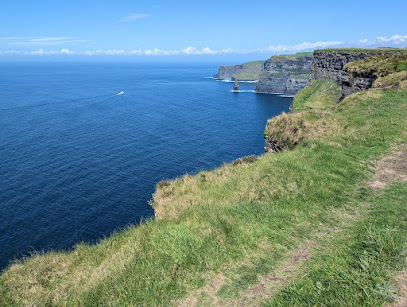
Ireland
Explore the stunning landscapes, rich history, and vibrant culture of Ireland, the Emerald Isle, where adventure awaits at every turn.
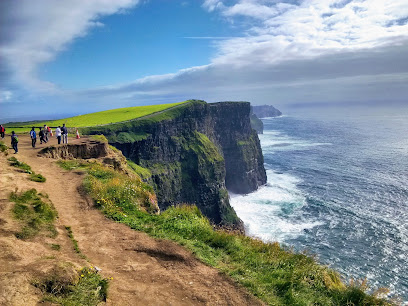
Dunguaire Castle
Experience the charm of Dunguaire Castle, a stunning medieval fortress overlooking Galway Bay, rich in history and cultural heritage.
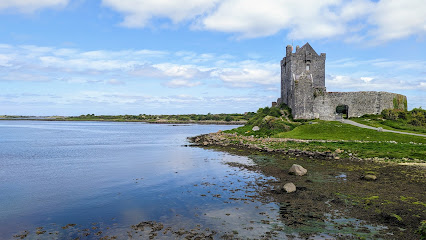
Aillwee Burren Experience
Explore the breathtaking Aillwee Burren Experience in County Clare, where natural wonders and rich biodiversity await in Ireland's iconic limestone landscape.
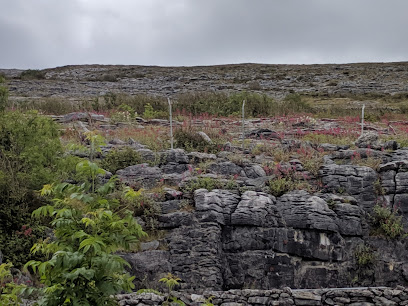
Poulnabrone Dolmen
Explore the ancient Poulnabrone Dolmen in Co. Clare, a breathtaking portal tomb set in the stunning landscape of the Burren, rich in history and natural beauty.
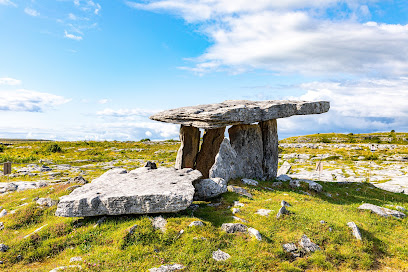
Monks Ballyvaughan
Experience the charm of Monks Ballyvaughan, where stunning coastal views meet exceptional seafood dining in County Clare.
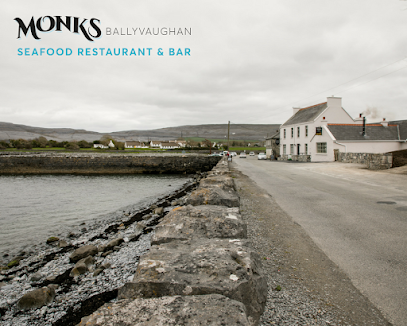
Doolin Cave
Discover the breathtaking beauty of Doolin Cave, home to one of the world's longest stalactites and a treasure trove of geological wonders.
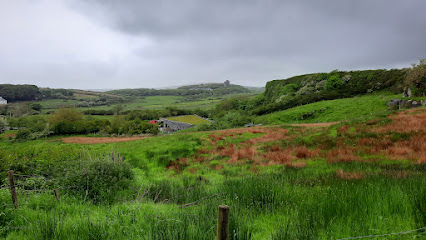
The Burren Perfumery
Discover the enchanting Burren Perfumery, where local botanicals and artisanal craftsmanship create unforgettable scents in a stunning Irish landscape.
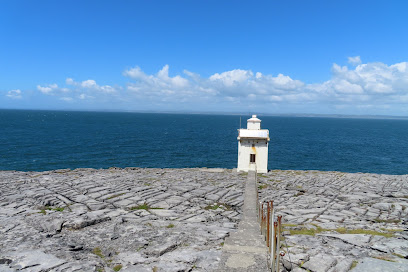
Burren National Park
Explore the breathtaking landscapes and rich biodiversity of Burren National Park, a unique gem in County Clare, Ireland.
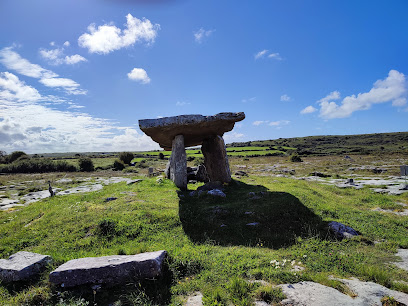
Aughnanure Castle
Explore the historical wonders of Aughnanure Castle in Co. Galway - a captivating landmark steeped in rich Irish heritage and breathtaking scenery.
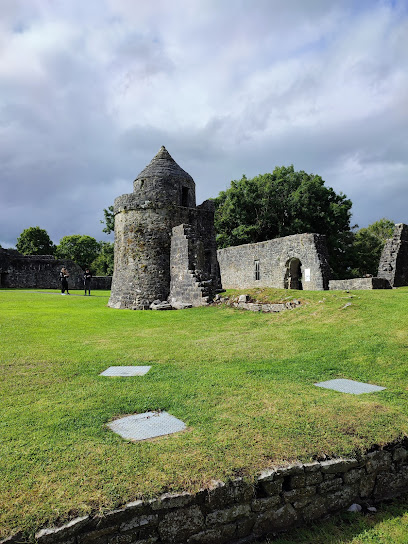
Caherconnell Stone Fort & Sheepdog Demonstrations
Explore Caherconnell Stone Fort: a historic gem in County Clare, Ireland, showcasing ancient architecture and traditional sheepdog demonstrations amidst stunning landscapes.
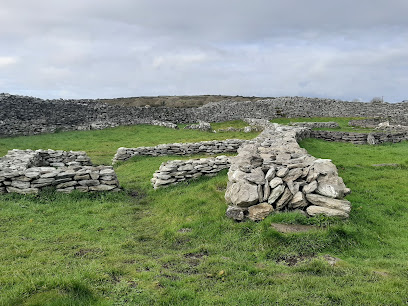
The Burren Visitor Centre & Cafe
Explore the natural beauty and rich culture at The Burren Visitor Centre & Cafe, your gateway to the Burren in County Clare.
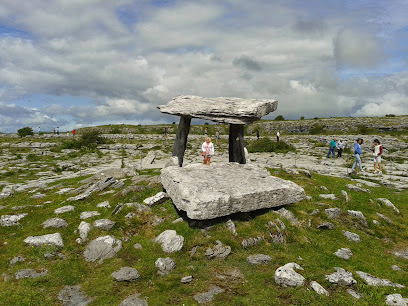
Bothar nA hAillite
Explore Bothar nA hAillite, a breathtaking historical landmark in Co. Clare, surrounded by stunning landscapes and rich Irish heritage.
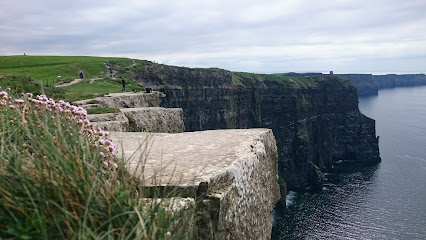
Craggaunowen Castle & Crannóg
Explore the rich history of Ireland at Craggaunowen Castle & Crannóg, where ancient wonders meet stunning landscapes in County Clare.
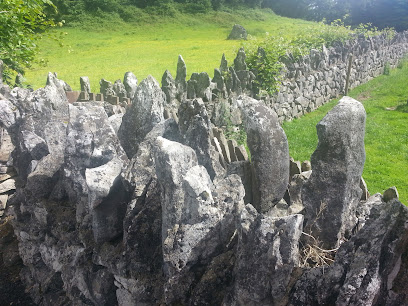
Burren Nature Sanctuary & Botanical Collection
Explore the enchanting Burren Nature Sanctuary, a haven for nature lovers and families, offering education, adventure, and relaxation in County Galway.
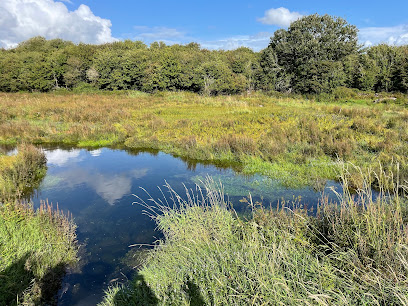
Unmissable attractions to see
Cliffs of Moher
Discover the breathtaking Cliffs of Moher in County Clare, Ireland, a stunning natural attraction for hiking, bird watching, and unforgettable coastal views.

O'Brien's Tower
Discover the breathtaking views and rich history at O'Brien's Tower, a historic landmark overlooking the Cliffs of Moher in County Clare, Ireland.
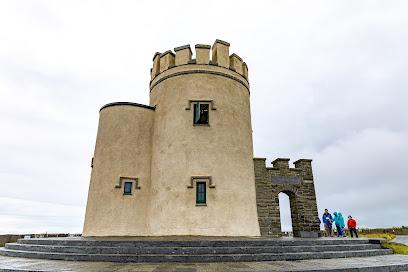
The Burren Perfumery
Discover the artistry of fragrance at The Burren Perfumery, where nature meets craftsmanship in Co. Clare, Ireland.
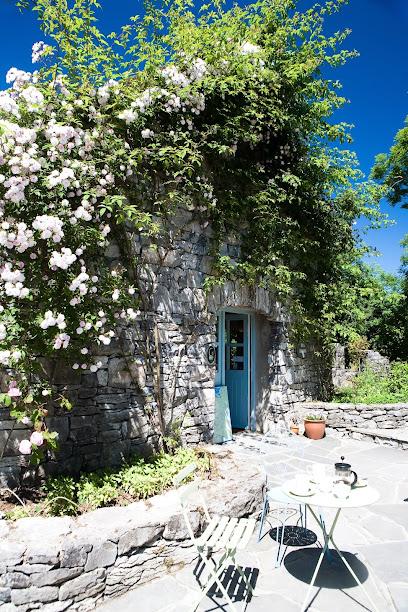
Charlie Byrne's Bookshop
Explore the literary haven of Charlie Byrne's Bookshop in Galway, where every corner holds a new story waiting to be discovered.
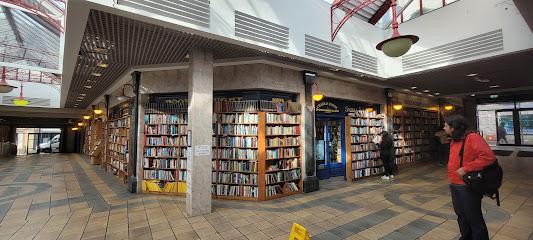
Moher Tower at Hag's Head
Discover the breathtaking Moher Tower at Hag's Head, a historic castle ruin offering stunning views of the Atlantic and rich Irish heritage.
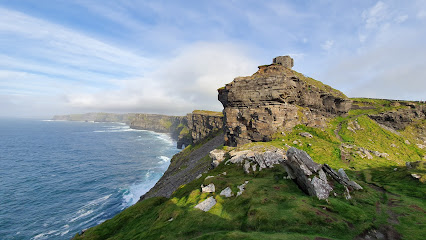
The Burren Visitor Centre & Cafe
Explore the unique geology, flora, and culture of the Burren at The Burren Visitor Centre & Cafe in Kilfenora, Co. Clare.
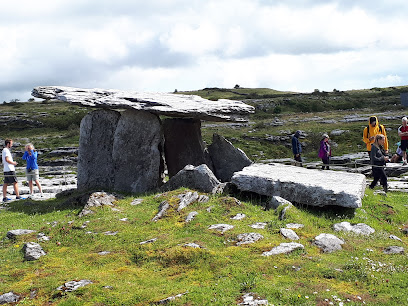
Bothar nA hAillite
Explore Bothar nA hAillite, a historical landmark in Co. Clare, where stunning landscapes and rich heritage come together in a unique Irish experience.
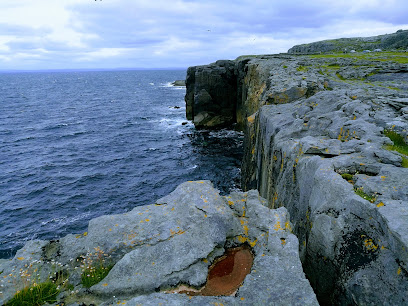
Cliff Walk Kilkee
Experience the breathtaking views and natural beauty of the Cliff Walk in Kilkee, a must-visit destination for every traveler in Ireland.
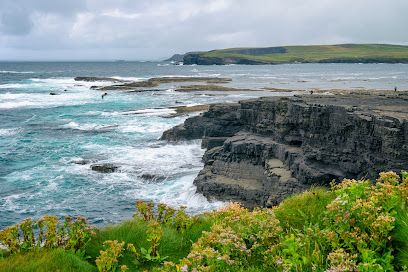
Ballyvaughan Pier
Experience the breathtaking views and serene atmosphere at Ballyvaughan Pier, a gem along Ireland's Wild Atlantic Way.
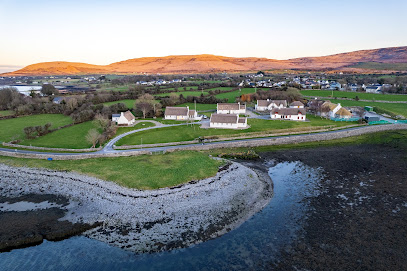
Cavan Burren Park
Explore the enchanting beauty of Cavan Burren Park, a stunning natural wonder in Ireland, filled with geological marvels and rich history.
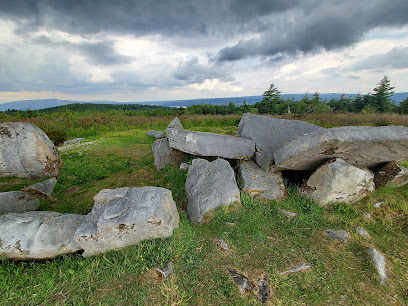
Corkscrew Hill
Discover the breathtaking views of Corkscrew Hill in County Clare, a scenic spot that showcases the natural beauty of Ireland's landscape.
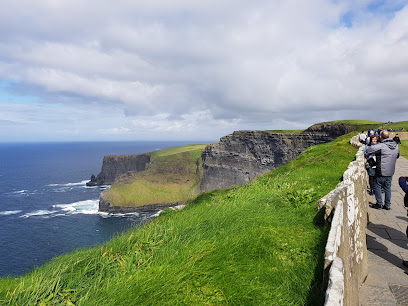
Shannon Heritage
Explore the rich history and vibrant culture at Shannon Heritage, home to Bunratty Castle and Folk Park, a jewel of Ireland's past.

Aran Sweater Market
Discover authentic Irish knitwear and unique gifts at the Aran Sweater Market, a cultural gem on the stunning Aran Islands.
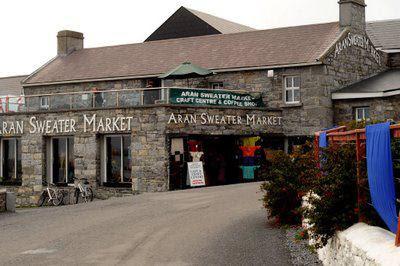
Flaggy Shore
Explore the stunning coastal beauty of Flaggy Shore in Co. Clare, a perfect destination for nature lovers and photography enthusiasts.

Clahane Viewpoint
Discover the breathtaking views at Clahane Viewpoint, a serene spot on the rugged coast of County Clare, perfect for nature lovers and photographers.
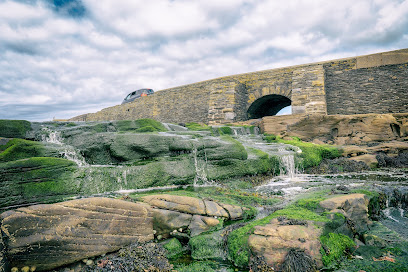
Essential places to dine
Gus O'Connor's Pub
Discover authentic Irish culture at Gus O'Connor's Pub in Doolin - where music meets hearty cuisine in a warm atmosphere.
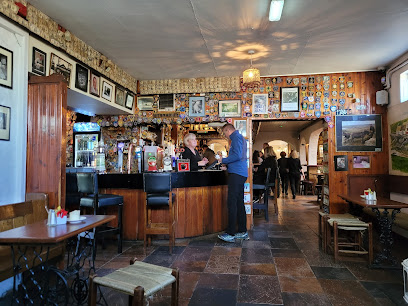
Monks Ballyvaughan
Experience authentic Irish hospitality at Monks Ballyvaughan—your perfect coastal retreat for exquisite seafood dining and breathtaking ocean views.
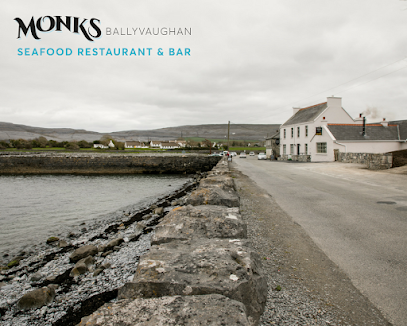
Linnane's Lobster Bar
Experience exquisite seafood at Linnane's Lobster Bar in New Quay - where fresh ingredients meet stunning coastal views.
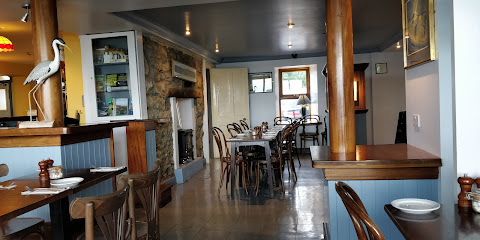
The Pier Head Bar & Restaurant
Experience exquisite seafood dining at The Pier Head Bar & Restaurant in Kinvarra – where flavor meets breathtaking coastal views.
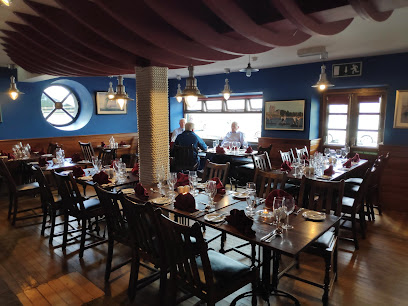
The Ivy Cottage
Experience authentic Irish cuisine at The Ivy Cottage in Doolin – where tradition meets warmth and flavor.
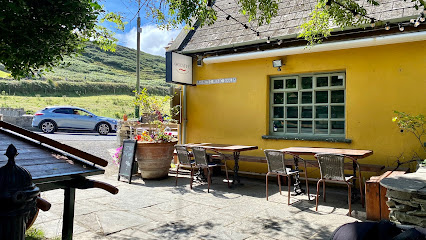
Roadside Tavern Lisdoonvarna
Experience authentic Irish cuisine at The Roadside Tavern in Lisdoonvarna, featuring locally sourced dishes and craft beers from their own microbrewery.
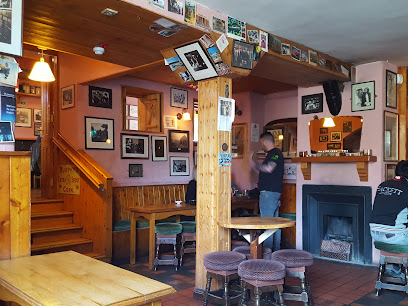
Bofey Quinns Bar & Restaurant
Discover the heart of Irish cuisine at Bofey Quinns Bar & Restaurant in Corofin—where tradition meets taste in every bite.
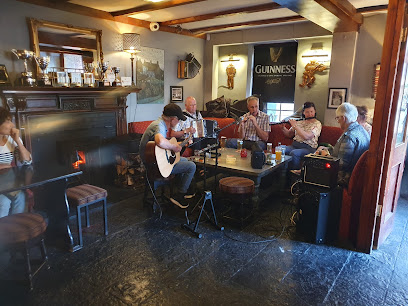
Joseph McHugh
Experience authentic Irish hospitality at Joseph McHugh's Pub in Liscannor - your gateway to local flavors and vibrant atmosphere.
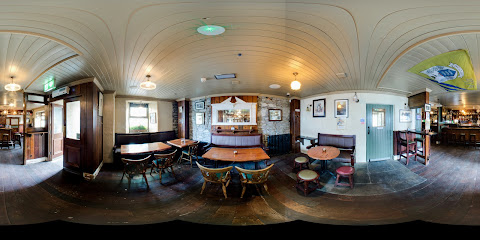
The Ritz
Experience authentic Irish cuisine at The Ritz in Lisdoonvarna - where tradition meets taste in a warm and welcoming atmosphere.

O'Donohues Pub
Experience traditional Irish culture at O'Donohues Pub in Craggagh - where hearty meals meet vibrant music in a cozy setting.
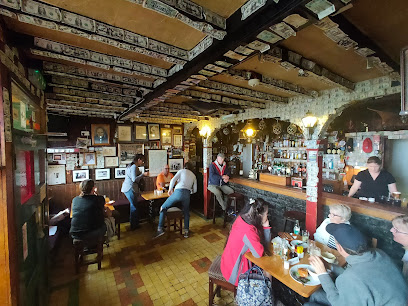
Russells Seafood Bar
Experience exceptional seafood dining at Russells Seafood Bar in Doolin – where local flavors meet traditional Irish hospitality.
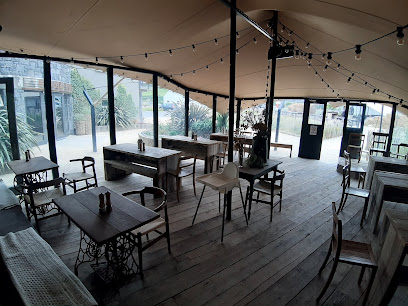
Fox's of Kinvara
Discover authentic Irish flavors at Fox's of Kinvara – where local ingredients meet warm hospitality in the heart of Galway.
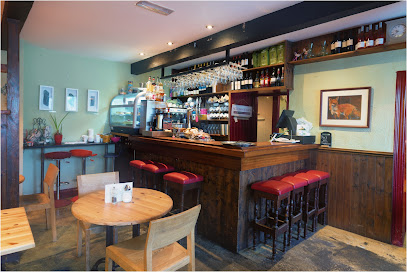
Cassidys Pub and Restaurant
Discover Cassidy's Pub and Restaurant - where authentic Irish flavors meet stunning views in The Burren.
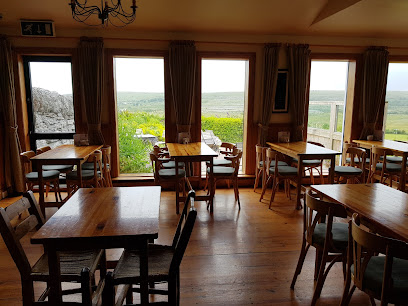
L'Arco Italian Restaurant
Experience authentic Italian dining at L'Arco in Ballyvaughan - where traditional flavors meet warm hospitality in Co. Clare.
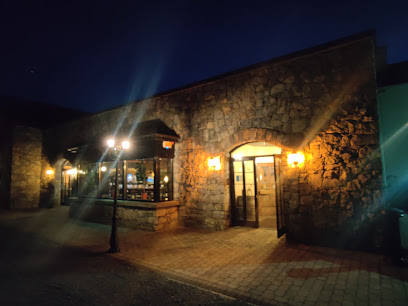
Hylands Burren Hotel
Experience luxury amidst nature at Hylands Burren Hotel - your gateway to exploring County Clare's breathtaking landscapes.
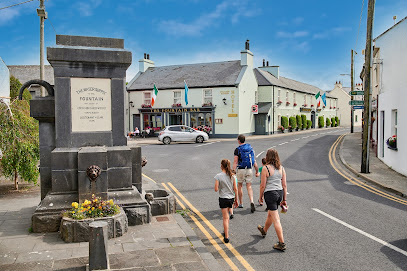
Markets, malls and hidden boutiques
The Burren Perfumery
Explore the enchanting Burren Perfumery, where nature, handcrafted scents, and local culture come together in a fragrant journey.
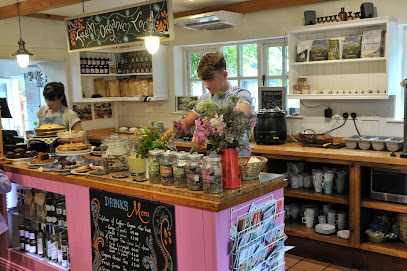
The Rock Shop
Discover unique gifts, fossils, and a cozy café at The Rock Shop in Co. Clare, where every treasure tells a story.
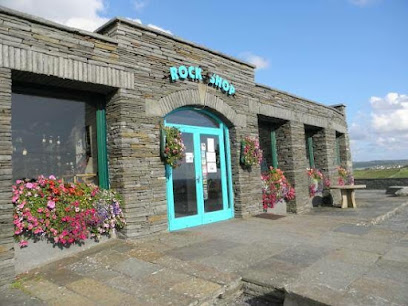
Hazel Mountain Chocolate
Discover the sweet taste of artisanal chocolates at Hazel Mountain Chocolate, a hidden gem in the stunning Burren region of Co. Clare.
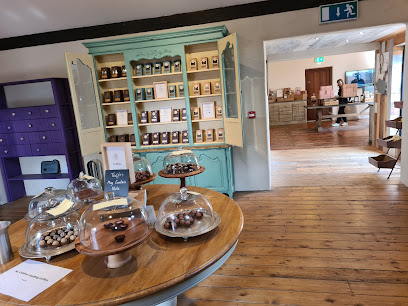
The Burren Visitor Centre & Cafe
Explore the wonders of The Burren at the Visitor Centre & Cafe, your key to discovering County Clare's unique landscape and culture.
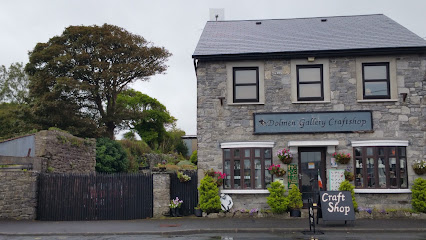
Burren and Cliffs of Moher UNESCO Global Geopark
Explore the stunning landscapes and rich biodiversity of Burren and Cliffs of Moher, a UNESCO Global Geopark in County Clare, Ireland.
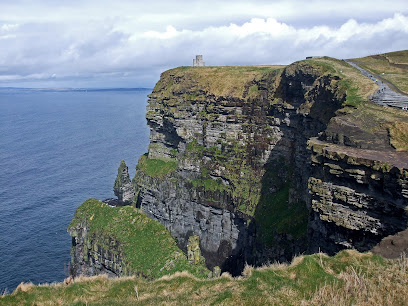
The Burren Smokehouse
Experience the exquisite flavors of Ireland at The Burren Smokehouse, a culinary haven offering smoked delicacies and local specialties in Lisdoonvarna.
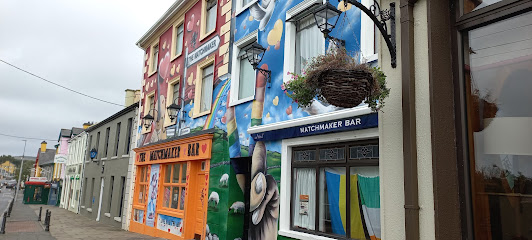
Irish Crafts - Doolin
Discover authentic Irish artistry at Irish Crafts in Doolin, where unique jewelry, gifts, and handmade treasures await every visitor.
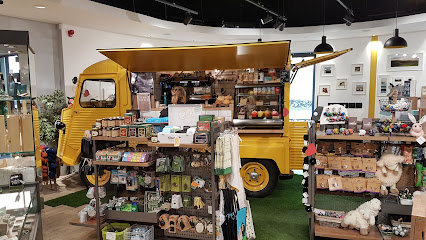
Minihane's SuperValu Gort
Experience the local flavors of Gort at Minihane's SuperValu, your one-stop shop for fresh produce, baked goods, and local specialties.
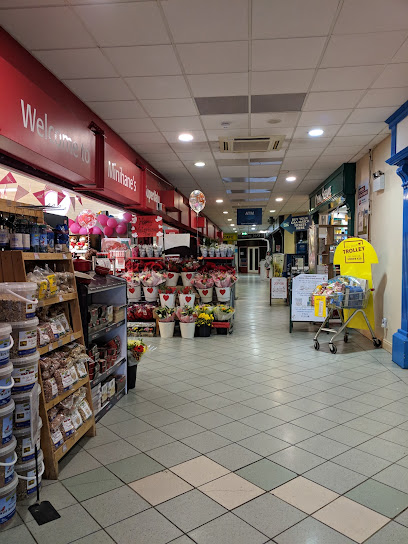
The White Gallery
Discover your dream wedding dress at The White Gallery, where elegance meets personalized service in a charming bridal boutique.
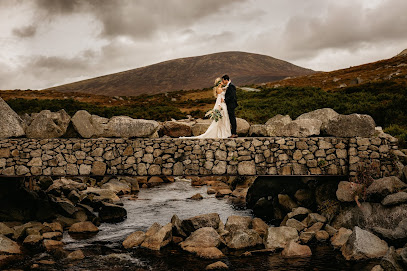
Clarenbridge Antiques
Explore Clarenbridge Antiques in County Galway, where history comes alive with unique vintage treasures and charming stories.
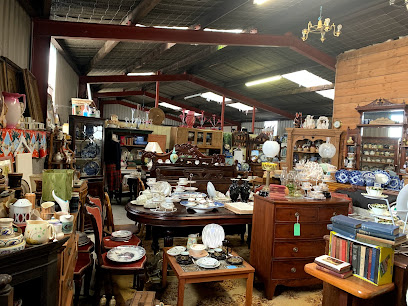
Clare Jam Shop
Experience the authentic flavors of Ireland at Clare Jam Shop in Doolin, where artisanal jams and local produce await you.
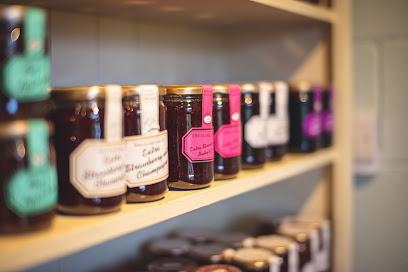
Gra Coffee
Discover the cozy charm of Gra Coffee in County Clare, where artisanal brews meet stunning Irish landscapes for a perfect coffee experience.
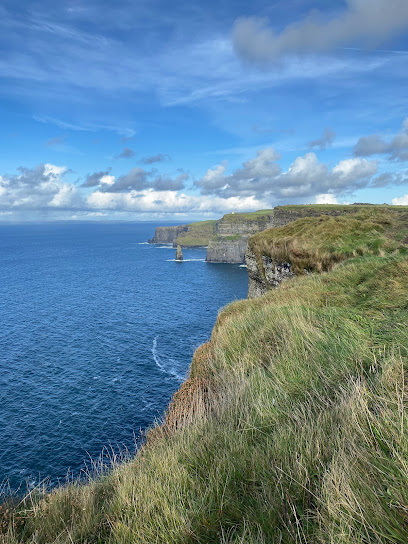
Irish T-Shirts
Discover unique Irish t-shirts celebrating culture and heritage near the Cliffs of Moher in Co. Clare, a perfect souvenir for your travels.
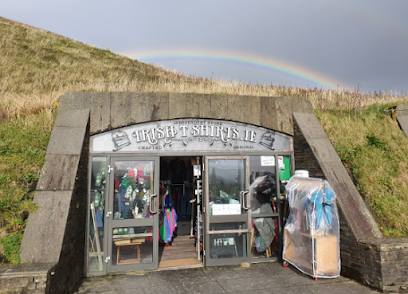
Burren Jewellery
Discover exquisite handcrafted jewelry at Burren Jewellery, where artistry meets the natural beauty of Co. Wicklow, Ireland.
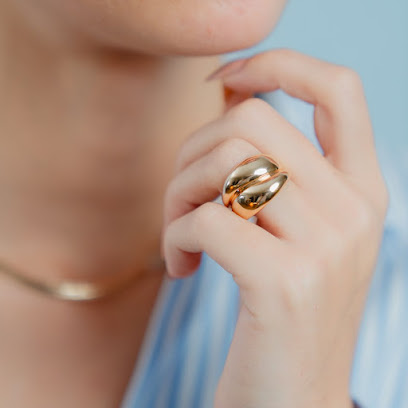
The Burren Flower Farm
Explore the beauty of The Burren Flower Farm, a haven for floral enthusiasts in Co. Clare, celebrating sustainable farming and stunning blooms.
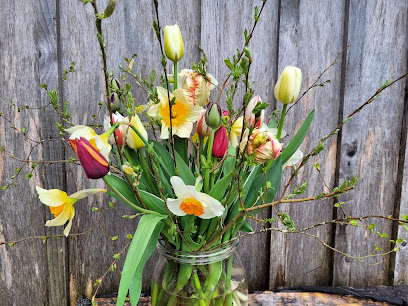
Essential bars & hidden hideouts
Gus O'Connor's Pub
Experience the essence of Irish culture at Gus O'Connor's Pub in Doolin, where hearty food meets lively traditional music in a welcoming atmosphere.
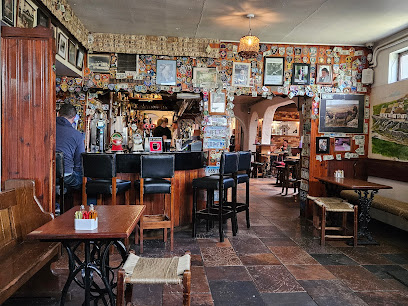
McGann's Pub
Discover the heart of Irish culture at McGann's Pub in Doolin, where live music, hearty food, and warm hospitality await.

Monks Ballyvaughan
Discover the heart of Irish hospitality at Monks Ballyvaughan, where stunning views, fresh seafood, and a lively bar await you.
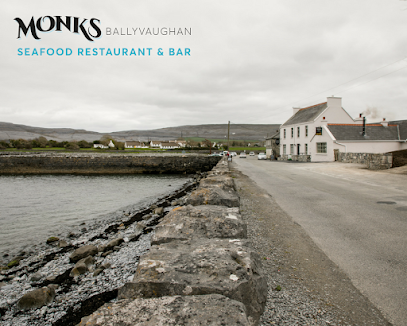
Linnane's Lobster Bar
Experience the best in seafood dining at Linnane's Lobster Bar, where stunning views meet exquisite flavors in New Quay, Co. Clare.
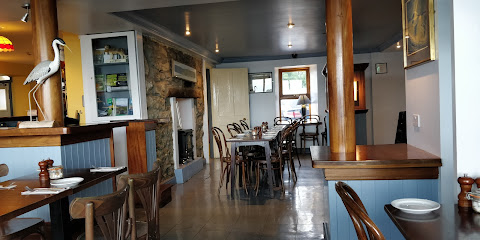
The Pier Head Bar & Restaurant
Experience exquisite seafood and fine dining at The Pier Head Bar & Restaurant, where stunning harbor views meet exceptional culinary delights in Kinvarra.
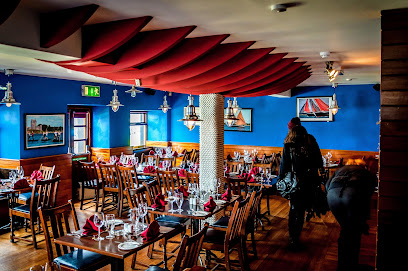
McDermott's Pub
Discover the heart of Doolin at McDermott's Pub, where Irish tradition meets modern hospitality in a cozy, music-filled atmosphere.
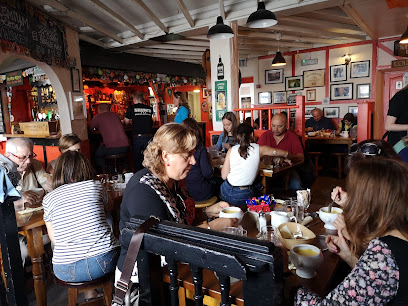
The Ivy Cottage
Discover the flavors of Ireland at The Ivy Cottage in Doolin, where every dish is crafted with love from local ingredients.
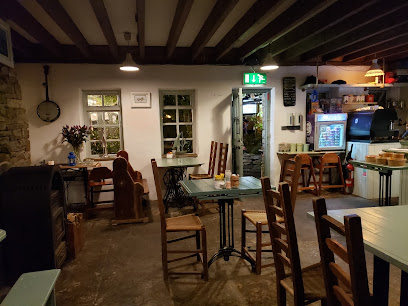
Vaughans Anchor Inn
Discover the perfect blend of dining, drinking, and lodging at Vaughans Anchor Inn in Liscannor, County Clare, where Irish hospitality awaits.
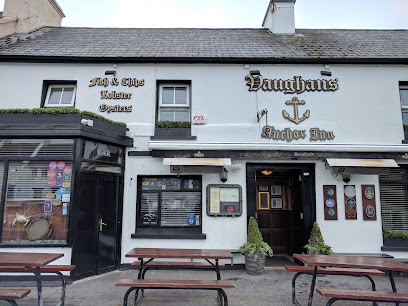
Fitz's Pub
Experience the warmth of Irish hospitality at Fitz's Pub in Doolin, where great drinks and traditional cuisine meet vibrant local culture.
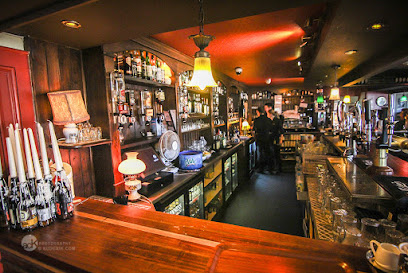
Roadside Tavern Lisdoonvarna
Discover the flavors of Ireland at The Roadside Tavern, a beloved gastropub in Lisdoonvarna, known for its locally sourced dishes and inviting atmosphere.
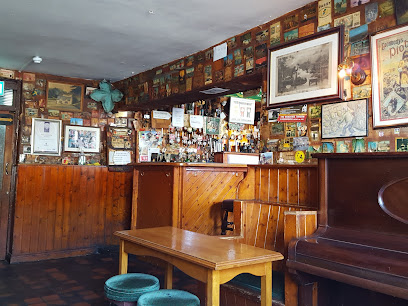
Keogh's Cafe, Restaurant, Kinvara
Discover the warmth and flavors of Ireland at Keogh's Cafe in Kinvara, where every meal is a celebration of local cuisine and camaraderie.
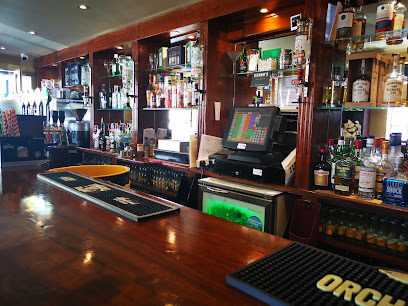
Vaughan's Pub
Experience the heart of Irish culture at Vaughan's Pub, a historic venue offering authentic cuisine and lively entertainment in Kilfenora, Co. Clare.
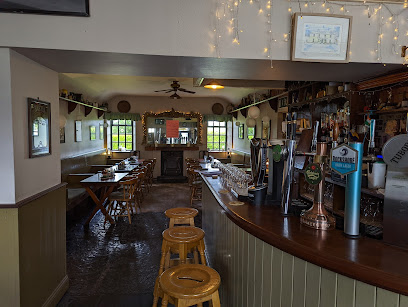
The Wild Atlantic Lodge
Discover the charm of The Wild Atlantic Lodge in Ballyvaughan, where comfort meets the beauty of County Clare.
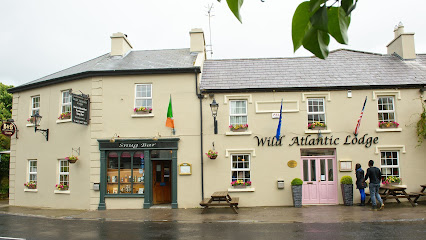
Joseph McHugh
Experience the heart of Irish hospitality at Joseph McHugh's Pub, where delicious food, local brews, and vibrant culture come together in Liscannor.
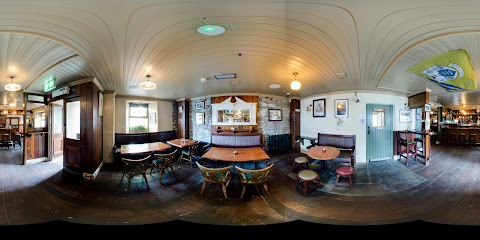
Russells Seafood Bar
Experience the best of Irish seafood at Russells Seafood Bar in Doolin, where fresh flavors and warm hospitality await every visitor.
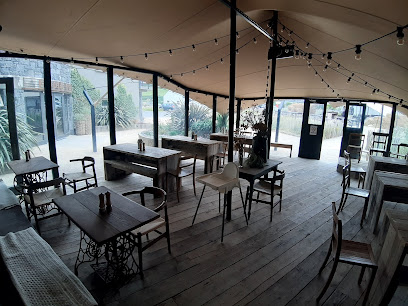
Local Phrases about The Burren
-
- HelloDia dhuit
[dee-ah ghwich] - GoodbyeSlán
[slawn] - YesTá
[taw] - NoNíl
[neel] - Please/You're welcomeLe do thoil
[leh duh hull] - Thank youGo raibh maith agat
[guh rah mah agut] - Excuse me/SorryTá brón orm
[taw brohn urm] - How are you?Conas atá tú?
[kun-us ah-taw too] - Fine. And you?Tá mé go maith. Agus tú?
[taw may guh mah. ah-gus too] - Do you speak English?An bhfuil Béarla agat?
[ahn will bayr-lah ah-gut] - I don't understandNí thuigim
[nee hug-im]
- HelloDia dhuit
-
- I'd like to see the menu, pleaseBa mhaith liom an mhéaróg a fheiceáil, le do thoil
[ba wah lyum on vay-rohg ah eck-ah-leh, leh duh hull] - I don't eat meatNí ithim feoil
[nee ih-him foh-il] - Cheers!Sláinte!
[slahn-cheh] - I would like to pay, pleaseBa mhaith liom íoc, le do thoil
[ba wah lyum eek, leh duh hull]
- I'd like to see the menu, pleaseBa mhaith liom an mhéaróg a fheiceáil, le do thoil
-
- Help!Cabhraigh!
[kow-ree] - Go away!Imigh uait!
[ih-mee wayt] - Call the Police!Glan an Gharda!
[glahn ahn gahr-dah] - Call a doctor!Glan dochtúir!
[glahn dohk-too-ir] - I'm lostTá mé caillte
[taw may cahl-cheh] - I'm illTá mé tinn
[taw may chin]
- Help!Cabhraigh!
-
- I'd like to buy...Ba mhaith liom ceannach...
[ba wah lyum can-ah] - I'm just lookingNíl mé ach ag féachaint
[neel may ahk eg fay-ah-chent] - How much is it?Cé mhéad é?
[kay vade ay] - That's too expensiveTá sé ró-dháiríre
[taw shay row-gaw-reh] - Can you lower the price?An féidir leat an praghas a ísliú?
[ahn fay-dur lat on prah-gus ah eesh-loo]
- I'd like to buy...Ba mhaith liom ceannach...
-
- What time is it?Cén t-am é?
[kayn tahm ay] - It's one o'clockTá sé a haon a chlog
[taw shay ah hayn ah klog] - Half past (10)Leathuair tar éis a deich
[lah-hoo-ir tar aysh ah deh] - MorningMaidin
[mah-djin] - AfternoonTráthnóna
[traw-noh-nah] - EveningTráthnóna
[traw-noh-nah] - YesterdayInné
[in-ay] - TodayInniu
[in-yoo] - TomorrowAmárach
[ah-maw-rakh] - 1Aon
[ayn] - 2Dó
[doh] - 3Trí
[tree] - 4Ceathair
[cah-her] - 5Cúig
[coo-ig] - 6Sé
[shay] - 7Seacht
[shokht] - 8Ocht
[ukht] - 9Naoi
[nee] - 10Deich
[deh]
- What time is it?Cén t-am é?
-
- Where's a/the...?Cá bhfuil an...?
[kah will ahn] - What's the address?Cad é an seoladh?
[kahd ay ahn shoh-lah] - Can you show me (on the map)?An bhfuil tú in ann dom a thaispeáint (ar an léarscáil)?
[ahn will too in ahn dum ah hah-shpaynt (ahr ahn layr-skawl)] - When's the next (bus)?Cén t-am a bhfuil an chéad (bus)?
[kayn tahm ah will ahn khayd (bus)] - A ticket (to ....)Ticéad (go dtí ....)
[tick-ayd (guh dee)]
- Where's a/the...?Cá bhfuil an...?
History of The Burren
-
The Burren is home to some of Ireland's oldest archaeological remains, dating back to the Neolithic period (around 4000-2500 BC). The most famous of these is the Poulnabrone Dolmen, a portal tomb that stands as a testament to the early settlers of the region. This ancient burial site offers a glimpse into the life and death rituals of the Neolithic people who once inhabited this rugged landscape.
-
Moving into the Bronze Age (circa 2500-500 BC), The Burren continued to be a significant area for human settlement. This period saw the construction of numerous wedge tombs and stone circles, which served both ritualistic and communal purposes. One notable example is the Gleninsheen Wedge Tomb, which was discovered with a gold collar that is now displayed in the National Museum of Ireland.
-
By the Iron Age (circa 500 BC - 400 AD), The Burren had become an important region for the early Celtic tribes. The landscape is dotted with ring forts and promontory forts, which served as both defensive structures and symbols of power. The Cahercommaun Stone Fort is one of the most impressive, built on the edge of a cliff with panoramic views of the surrounding area.
-
The arrival of Christianity in Ireland brought significant cultural changes to The Burren. During the Early Christian period (circa 400-800 AD), several monastic settlements were established in the area. The ruins of Corcomroe Abbey, a Cistercian monastery founded in the 12th century, stand as a testament to the religious devotion and architectural skill of the monks who lived there.
-
The Norman invasions of the 12th century had a profound impact on The Burren. The construction of castles and tower houses, such as Leamaneh Castle, marked the beginning of a new era of feudal control and military architecture in the region. These structures were built to assert dominance and control over the land and its people.
-
The Great Famine of the mid-19th century had devastating effects on The Burren, as it did across Ireland. The potato blight led to widespread starvation and emigration. Many families were forced to leave their homes, and the landscape is still marked by the ruins of abandoned villages and famine roads, which serve as poignant reminders of this tragic period in Irish history.
-
In recent years, The Burren has become a focal point for conservation efforts aimed at preserving its unique biodiversity and archaeological heritage. Initiatives such as the BurrenLIFE Project work to protect the delicate balance of flora and fauna, while also promoting sustainable tourism and agricultural practices. These efforts ensure that The Burren remains a living landscape, rich in history and natural beauty.
The Burren Essentials
-
The Burren is located in County Clare, Ireland. The nearest international airport is Shannon Airport, approximately 60 kilometers away. From Shannon Airport, you can rent a car, take a bus, or hire a taxi to reach The Burren. Alternatively, you can fly into Dublin Airport and take a train or bus to Ennis, followed by a local bus or taxi to The Burren. The journey from Dublin to The Burren typically takes around 3 to 4 hours by road.
-
While exploring The Burren, the most convenient way to get around is by car. Car rentals are available at major airports and in nearby towns. Public transportation options include local buses that connect key points within The Burren and surrounding areas. Cycling is also a popular way to explore, with several bike rental shops available. For those preferring guided tours, there are numerous tour operators offering bus and walking tours.
-
The official currency in Ireland is the Euro (EUR). Credit cards are widely accepted in hotels, restaurants, and shops throughout The Burren. However, some smaller establishments may only accept cash, so it is advisable to carry some Euros with you. ATMs are available in nearby towns such as Ennis and Ballyvaughan.
-
The Burren is generally a very safe destination for tourists. However, it is always wise to take standard precautions. Keep an eye on your belongings and avoid leaving valuables in your car. There are no specific high-crime areas targeting tourists in The Burren, but it is always best to stay vigilant and aware of your surroundings, especially when hiking in remote areas.
-
In case of emergency, dial 112 or 999 for immediate assistance. The local police, called Gardaí, and medical facilities are available in nearby towns such as Ennis. It is recommended to have travel insurance that covers medical emergencies. For minor health issues, there are pharmacies in the area where you can purchase over-the-counter medications.
-
Fashion: Do wear comfortable and weather-appropriate clothing, especially if you plan to hike. Layers are recommended due to changing weather conditions. Religion: Do respect local customs and traditions. Public Transport: Do be courteous and give up your seat to elderly passengers on buses. Don't be loud or disruptive on public transport. Greetings: Do greet people with a friendly 'hello' or 'hi.' A handshake is also common in more formal settings. Eating & Drinking: Do try local dishes, such as seafood and traditional Irish fare. Don't refuse hospitality, as it is considered impolite.
-
To experience The Burren like a local, visit local farmers' markets where you can buy fresh produce, artisan foods, and crafts. Engage with locals, as they are often friendly and willing to share stories about the area's history and culture. Don't miss visiting the Poulnabrone dolmen, a famous prehistoric monument. For a unique experience, take a guided wildflower walk to learn about the diverse flora of The Burren.
Trending Landmarks in The Burren
-
Cliffs of Moher Experience
-
Ireland
-
Dunguaire Castle
-
Aillwee Burren Experience
-
Poulnabrone Dolmen
-
Monks Ballyvaughan
-
Doolin Cave
-
The Burren Perfumery
-
Burren National Park
-
Aughnanure Castle
-
Caherconnell Stone Fort & Sheepdog Demonstrations
-
The Burren Visitor Centre & Cafe
-
Bothar nA hAillite
-
Craggaunowen Castle & Crannóg
-
Burren Nature Sanctuary & Botanical Collection
Nearby Cities to The Burren
-
Things To Do in Galway
-
Things To Do in Ennis
-
Things To Do in Limerick
-
Things To Do in Westport
-
Things To Do in Tralee
-
Things To Do in Athlone
-
Things To Do in Killarney
-
Things To Do in Dingle
-
Things To Do in Cork
-
Things To Do in Sligo
-
Things To Do in Kilkenny
-
Things To Do in Kinsale
-
Things To Do in Waterford
-
Things To Do in Dublin
-
Things To Do in Wexford













